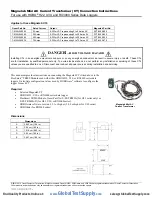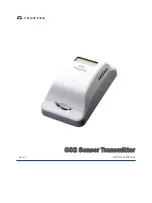
6
VHF 100/200 Series Owner’s Manual
Appendix
Select
SET
for more information on manually
entering position data.
Position Tracking
After five consecutive failed attempts to request position information from a vessel, “NO
POS FOR [VESSEL NAME]” is displayed on the screen.
Select
RETRY
to reattempt the position request.
Select
REMOVE
to discontinue calling the vessel. When you take no action after three
minutes,
REMOVE
is selected automatically.
Channel Lists
The USA, Canadian, and International channel lists provided in this Appendix are for
reference only. It is the responsibility of the radio operator to ensure that channels are used
correctly according to local regulations.
USA Channels
For the latest information on USA channels, visit
. Also visit the Federal Communications Commission’s Marine VHF Radio
http://wireless.fcc.gov/services/index.htm?job=service
. The FCC page does not include frequency information, but
has more complete information on the use of the channels.
IMPORTANT:
Boaters primarily should use channels listed as non-commercial. Use Channel
16 to call other stations or for distress alerting. Use Channel 13 to contact a ship when there is
danger of collision. All ships of length 20 m or greater are required to guard VHF Channel 13,
in addition to VHF Channel 16, when operating within USA territorial waters. Users may be
fined by the FCC for improper use of these channels.
Channel
Number
Transmission
MHz
Receiving
MHz
User
01A
156.050
156.050
Port operations and commercial, VTS. Available only in
the New Orleans and lower Mississippi areas.
03A
156.150
156.150
GOVERNMENT ONLY
05A
156.250
156.250
Port operations or VTS in the Houston, New Orleans,
and Seattle areas.
6
156.300
156.300
Intership safety
07A
156.350
156.350
Commercial
8
156.400
156.400
Commercial (Intership only)
9
156.450
156.450
Boater Calling. Commercial and non-commercial.
10
156.500
156.500
Commercial
•
•
•
Summary of Contents for VHF 200 Series
Page 59: ......
















































